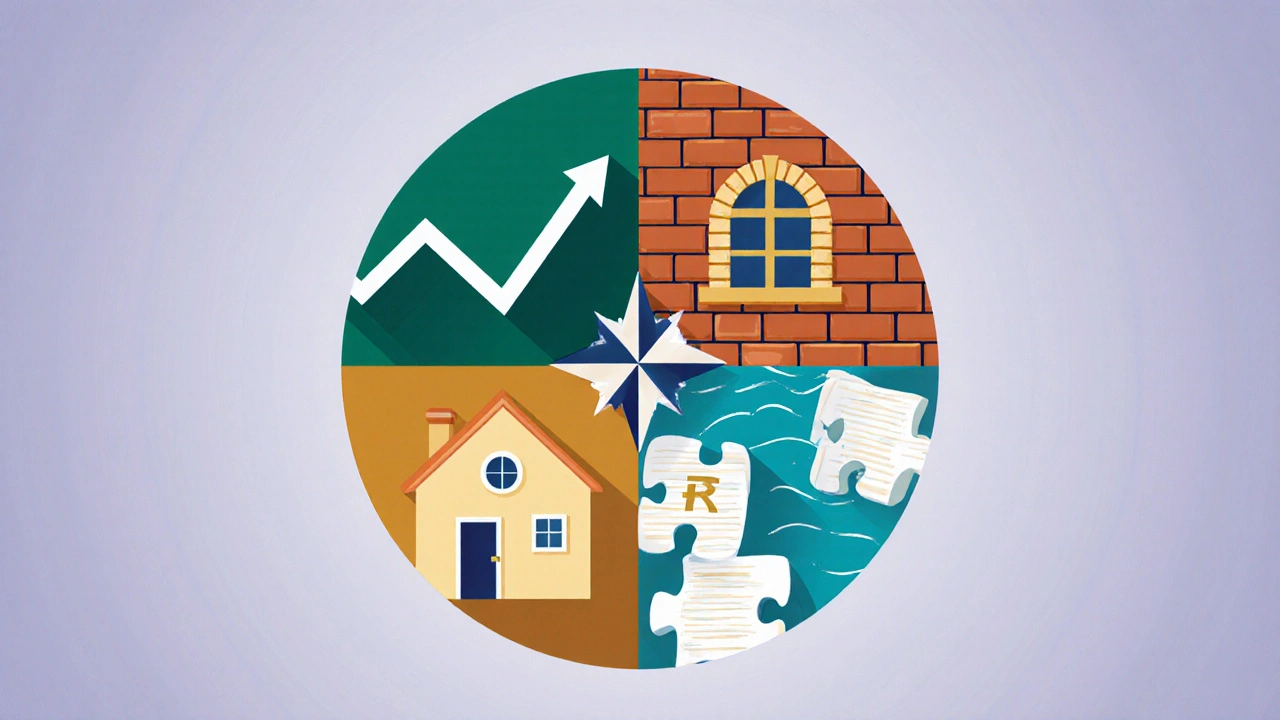Ever wondered why some people seem to watch their money grow while you’re still figuring out where to put that extra paycheck? The missing piece is often a clear plan for investments. When you channel cash into the right assets, you set the stage for a future where bills are covered, dreams are funded, and financial worries shrink.
Key Takeaways
- Investments are tools that can grow wealth faster than simple saving.
- Diversifying across stocks, bonds, real estate, ETFs, and mutual funds balances risk and reward.
- Compounding works best when you start early and stay consistent.
- Common mistakes include chasing hype, ignoring fees, and failing to rebalance.
- Follow a step‑by‑step action plan to launch and grow your portfolio.
What Are Investments?
Investments are financial assets-like stocks, bonds, or property-purchased with the expectation that they will generate income or appreciate over time. In plain terms, they’re a way to put your money to work instead of letting it sit idle in a checking account. While savings earn modest interest, investments can deliver returns that outpace inflation, helping you preserve purchasing power and build wealth.
Major Types of Investments
Knowing the main categories helps you match each to your goals, timeline, and risk tolerance.
Stocks
Stocks represent ownership in a corporation. When the company prospers, its share price can rise, and you may receive dividends. Historically, stocks have offered the highest long‑term returns, but they also swing more sharply in the short run.
Bonds
Bonds are debt securities issued by governments or corporations. You lend money and receive regular interest, plus the principal back at maturity. Bonds are generally steadier than stocks, making them a common pillar for risk‑averse investors.
Real Estate
Real Estate includes residential, commercial, or rental properties. Besides potential price appreciation, you can earn rental income. Real estate also offers tax benefits, though it requires larger capital and active management.
Exchange‑Traded Funds (ETFs)
ETFs are basket‑like funds that trade on exchanges like a single stock. They provide instant diversification across sectors or indexes at low cost, making them a favorite for beginners and seasoned investors alike.
Mutual Funds
Mutual Funds pool money from many investors to buy a diversified portfolio managed by professionals. They often have higher expense ratios than ETFs but can be useful for hands‑off investors who want expert oversight.

Comparison of Popular Investment Types
| Asset | Typical Return (Annual) | Risk Level | Liquidity | Ideal For |
|---|---|---|---|---|
| Stocks | 7‑10% | High | High (days) | Long‑term growth seekers |
| Bonds | 2‑5% | Medium | High (days) | Income‑oriented, lower risk |
| Real Estate | 4‑8% + rental income | Medium‑High | Low (weeks‑months) | Investors with capital & patience |
| ETFs | Varies (4‑12% typical) | Medium | High (days) | Diversifiers & cost‑conscious |
| Mutual Funds | Varies (5‑9% typical) | Medium | Medium (end‑of‑day pricing) | Hands‑off investors |
Building a Diversified Portfolio
Diversification spreads your money across different asset classes. The goal is to reduce the impact of any single poor performer. A simple rule of thumb for beginners is the “60/40” split: 60% equities (stocks, ETFs) and 40% fixed‑income (bonds, bond ETFs). As you grow, you can add real estate exposure through REITs or direct property.
Consider these practical steps:
- Assess your risk tolerance-can you handle a 15% dip in a year?
- Set a target asset allocation based on age and goals (e.g., more bonds as you near retirement).
- Choose low‑cost index ETFs for each major class to keep fees under 0.3%.
- Invest regularly (monthly) to benefit from dollar‑cost averaging.
- Rebalance annually-sell a portion of assets that have grown too large and buy those that have lagged.
How Investments Shape Your Financial Future
The power of compounding turns modest, regular contributions into sizable sums over decades. For example, a $200 monthly contribution to a diversified portfolio returning an average 7% annually becomes roughly $700,000 after 40 years. That kind of wealth can fund early retirement, college tuition, or a safety net for emergencies.
Beyond numbers, investments also give you flexibility. With a solid portfolio, you can take career risks, start a business, or travel more freely because you’re not completely dependent on a paycheck.

Common Pitfalls and How to Sidestep Them
- Chasing hot trends. Jumping into meme stocks or crypto without research often leads to loss.
- Ignoring fees. High expense ratios eat returns; opt for low‑cost ETFs and no‑load funds.
- Timing the market. Even seasoned pros struggle to predict short‑term moves. Stay invested.
- Neglecting taxes. Use tax‑advantaged accounts like Roth IRAs for growth, and be mindful of capital‑gain timing.
- Skipping rebalancing. Your allocation drifts over time; regular checks keep risk in line with goals.
Action Plan: Your First 5 Steps to Start Investing
- Set a clear goal. Define what you’re saving for and the timeline.
- Build an emergency fund. Save 3‑6 months of expenses in a high‑yield savings account before risking capital.
- Open a brokerage account. Choose a platform with low fees, intuitive UI, and solid research tools.
- Pick a core portfolio. Start with a mix like 70% total‑market stock ETF and 30% bond ETF.
- Automate contributions. Set up a recurring transfer on payday to ensure consistency.
After a few months, review your performance, adjust allocations if needed, and keep learning. Investing isn’t a one‑time event; it’s a lifelong habit that compounds both wealth and confidence.
Frequently Asked Questions
What is the safest investment for a beginner?
A low‑cost total‑market index ETF provides instant diversification, low fees, and solid long‑term growth, making it a strong starting point for most newcomers.
How much should I invest each month?
Aim for at least 10‑15% of your after‑tax income. If that feels tight, start with any amount you can afford and increase it as your budget allows.
Do I need a financial advisor to start investing?
Not necessarily. With modern brokerages offering educational resources and low‑fee index products, many investors successfully go solo. An advisor can help if you have complex tax situations or need personalized planning.
What role does risk tolerance play in choosing assets?
Risk tolerance determines how much volatility you can stomach. Higher tolerance allows more equity exposure for greater upside, while lower tolerance steers you toward bonds and stable assets.
How often should I rebalance my portfolio?
A common practice is an annual review, but you can also rebalance when any asset class drifts more than 5% from its target allocation.


